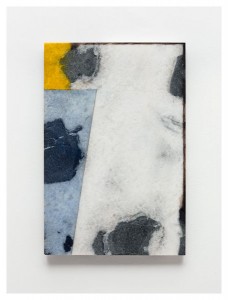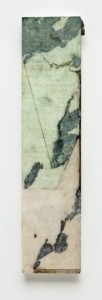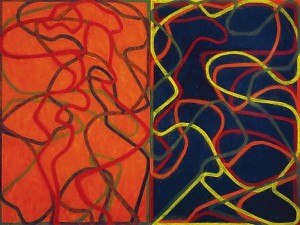 Who made the works posted at right?
Who made the works posted at right?
Don’t look yet. I doubt that you’ll know, right off the bat.
I posted these two paintings, with no attribution, in an online group of art historians and connoisseurs on Facebook, and no one guessed correctly. Few people even tried. Hours of head-scratching later, I provided the answer.
It is, of course, Brice Marden. But if I hadn’t signaled the answer by posting a sample of his previous work below, would you have known?
The man has been around a long time, acknowledged as a major American postwar artist, although, as critic Roberta Smith wrote in The New York Times in 2006, “He did not make his name by stopping painting in its tracks and setting it off in a radically new direction. There is no emblematic Marden invention, like a Johns flag or Stella stripes or a Warhol silk-screen Elvis, where you can say, There! That changed painting.”
 That was at the time of his retrospective at the Museum of Modern Art, which ended with a paint called “The Propitious Gardem of Plane Image, Third Version,” a larger, six-panel work much like the one below.  Smith called this series “glorious.” And so they were.
That was at the time of his retrospective at the Museum of Modern Art, which ended with a paint called “The Propitious Gardem of Plane Image, Third Version,” a larger, six-panel work much like the one below.  Smith called this series “glorious.” And so they were.
And now he has managed to surprise again, totally. These images come from an exhibition now on view through June 23 at Matthew Marks Gallery. They are two of:
fifteen new paintings in oil on marble, which Marden completed last year on the Greek island of Hydra…Reflecting the light and landscape of Greece, these paintings feature vibrant colors and geometric compositions, which subtly incorporate each piece of marble’s natural variations. Marden’s earlier series of paintings on marble, completed over a six-year period between 1981 and 1987, played a principal role in the transition from his early monochromatic paintings to the later calligraphic work.
More images are here.
 You can never really tell how good something is without seeing the works in person — and I haven’t seen these yet. I didn’t cotton to this series at first, and I wouldn’t (yet) call them glorious. They are quiet, subtle. They’re growing on me, and based on a few comments I received from art historians, I’m not alone.
You can never really tell how good something is without seeing the works in person — and I haven’t seen these yet. I didn’t cotton to this series at first, and I wouldn’t (yet) call them glorious. They are quiet, subtle. They’re growing on me, and based on a few comments I received from art historians, I’m not alone.
The headline from Smith’s 2006 review again (still?) seems apt: “The Man Who Persevered When Painting Was Stalled.”
Photo Credits: Courtesy of Matthew MarksÂ
